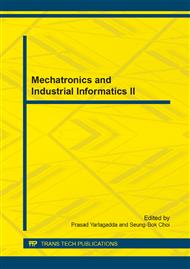p.442
p.449
p.453
p.457
p.463
p.468
p.472
p.476
p.480
Landing Point Predicting Method in Target Re-Entry Measurement
Abstract:
By introducing some atmospheric models and selecting methods for minimum integration step size and optimum initial integration value, a program of real time and near real time landing point predicting together with weighted processing methods of many groups of landing point parameters were put forward. Engineering application showed: the above methods and program improved real time and near real time landing point predicting precision more greatly compared with previously used methods, which had proved their broad applicability.
Info:
Periodical:
Pages:
463-467
Citation:
Online since:
July 2014
Authors:
Price:
Сopyright:
© 2014 Trans Tech Publications Ltd. All Rights Reserved
Share:
Citation:


